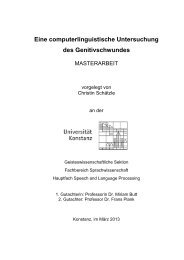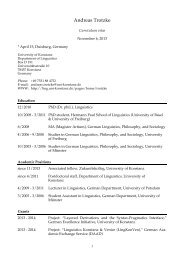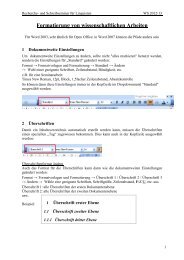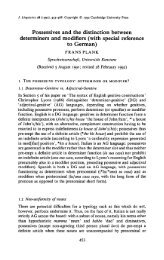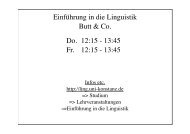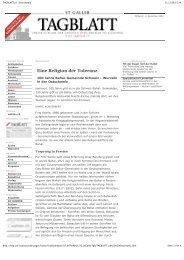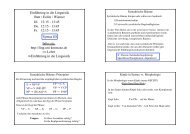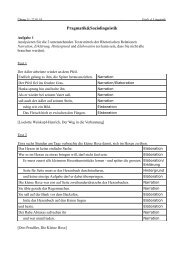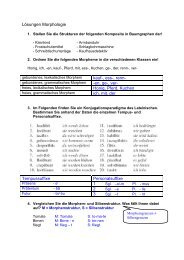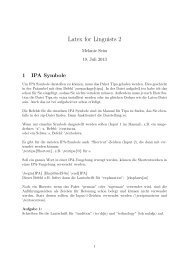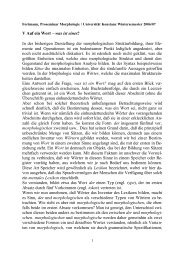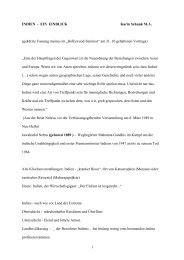5. Morphology in Relation to Phonology
5. Morphology in Relation to Phonology
5. Morphology in Relation to Phonology
Create successful ePaper yourself
Turn your PDF publications into a flip-book with our unique Google optimized e-Paper software.
F. Plank, <strong>Morphology</strong> I: <strong>5.</strong> <strong>Morphology</strong> <strong>in</strong> <strong>Relation</strong> <strong>to</strong> <strong>Phonology</strong> 35<br />
bäc.ke.REI, bac.ke.REI:<br />
with -ei nouns are derived from nouns (Bäcker) or verbs (backen);<br />
the syllable conta<strong>in</strong><strong>in</strong>g this suffix -ei attracts ma<strong>in</strong> stress.<br />
In such words the diphthong /ai/ has clearly a different status from that it<br />
has, e.g., <strong>in</strong> SAL.bei, PA.pa.gei, NAC.ke.dei, AL.ler.lei, which are words<br />
stressed accord<strong>in</strong>g <strong>to</strong> normal German stress rules (last syllable<br />
extrametrical; pars<strong>in</strong>g from right <strong>to</strong> left; moraic trochee) and where /ai/<br />
on its own has no mean<strong>in</strong>g;<br />
stress-attract<strong>in</strong>g -ei does have mean<strong>in</strong>g – <strong>in</strong> fact two mean<strong>in</strong>gs: 'place<br />
where a baker pursues his profession', 'constant pursuit of the activity of<br />
bak<strong>in</strong>g'.



